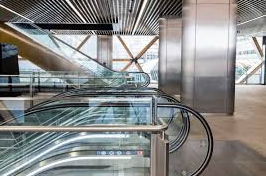Samuel Lim’s Vision for Clearer Signage and Better Wayfinding in Public Transit
In 2014, Samuel Lim, a design communications student at LASALLE College of the Arts, noticed something unusual during his daily MRT commute. At Outram Park Station, commuters were repeatedly getting lost on the same escalator, missing their way. His observation of this frequent confusion would later ignite a city-wide transformation in Singapore’s public transport signage.
His design journey started from a simple question: why were people struggling to navigate these spaces? Samuel recognised that poor signage was often the culprit, prompting him to consider a career in wayfinding—a specialised design field focused on creating systems to help people orient themselves in complex environments.
In 2015, Samuel’s final project at LASALLE, which involved redesigning MRT station signage, caught the attention of the Land Transport Authority (LTA). He was invited to work with them, eventually leading to a major revamp of the MRT signage system across the Thomson-East Coast Line (TEL).
The Journey of Reimagining the System
Samuel’s vision included several key changes, such as more intuitive exit signs and updated maps. He introduced numbered exits to replace letters and simplified directional signs to improve clarity. However, the journey wasn’t without its challenges. Samuel faced resistance to some of his proposals, including the shift to numbered exits, which was met with scepticism. Yet, Samuel firmly believed that numbers were far easier to understand for both locals and tourists, offering a straightforward way to communicate station layouts.
His work wasn’t just about aesthetics—it was about ensuring that commuters, regardless of language or experience, could navigate the system with ease. Despite some battles, such as his unsuccessful push for information points at platforms, Samuel remained determined to create a user-friendly and cohesive wayfinding system.
A Lasting Impact on the City’s Transit System
After leaving the LTA in 2020, Samuel continued his career in wayfinding, contributing to projects in Qatar before returning to Singapore to launch Studio Lucidus. He continues to help local businesses optimise their own wayfinding systems.
Yet, Samuel’s work on the MRT signage remains his most visible and influential contribution. Even today, commuters across the city benefit from his designs, although many may not even realise it. The simplicity of effective wayfinding means it often goes unnoticed when it works, but Samuel’s redesign has undoubtedly made a significant impact on how people experience Singapore’s MRT stations.
Reflecting on his journey, Samuel emphasises that the true measure of success in design isn’t just recognition—it’s about creating solutions that people can rely on, even if they never consciously appreciate them. His work has transformed the way thousands of commuters navigate the city, and in doing so, has reinforced the power of thoughtful design.


